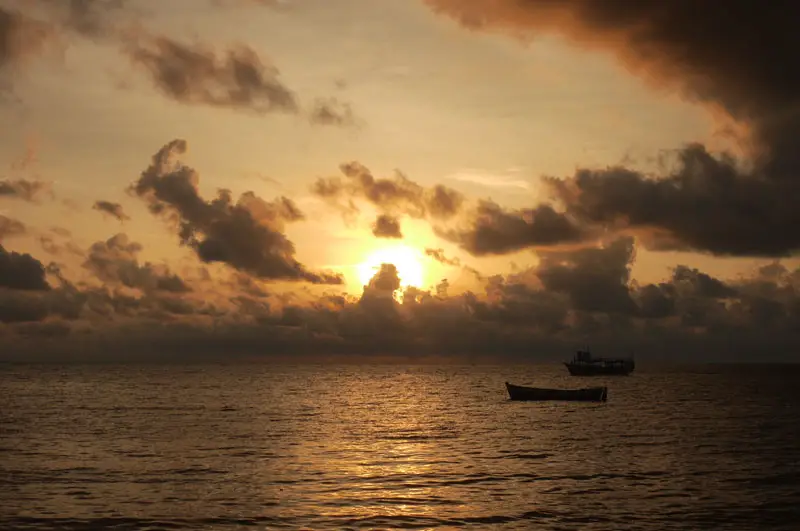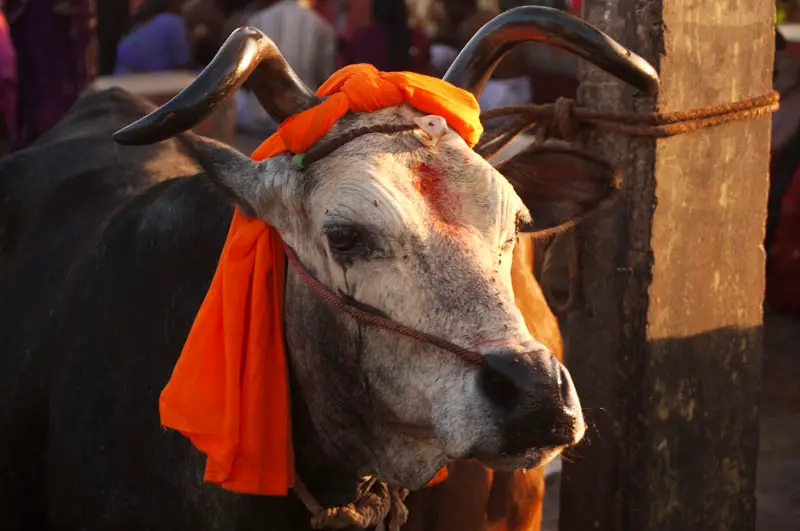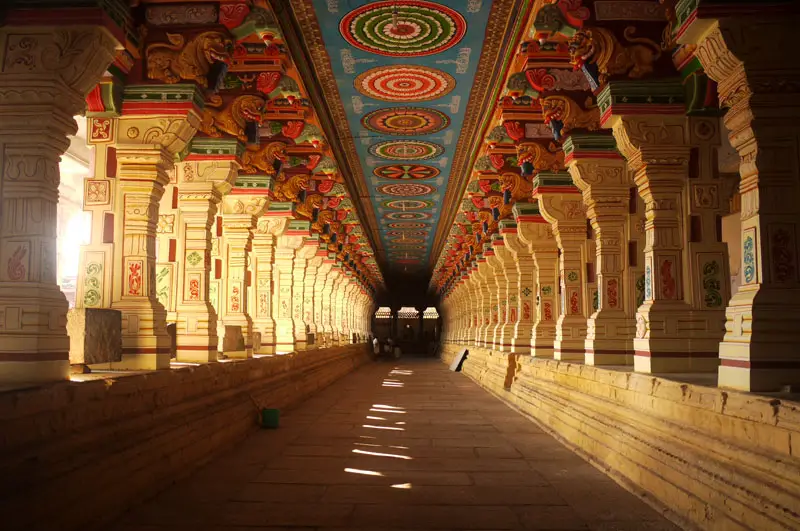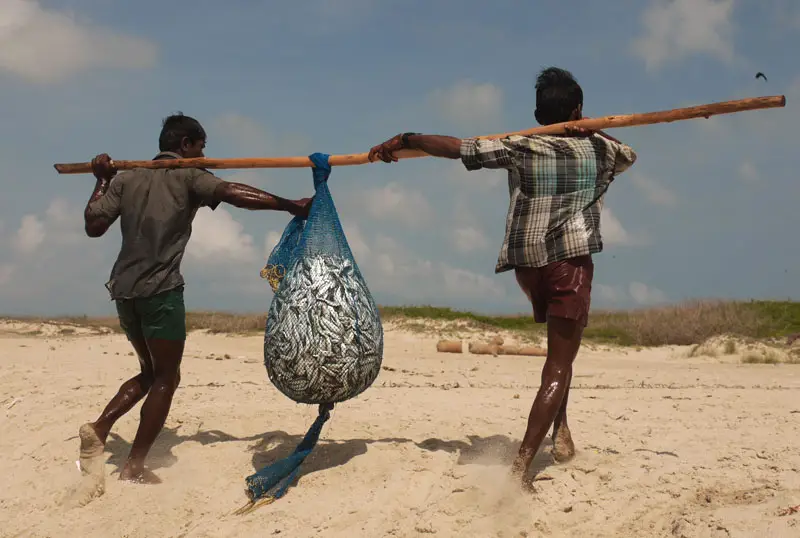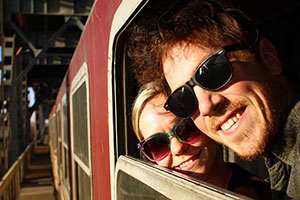Known as the ‘Varanasi of the south’, Rameswaram is a much more interesting alternative to Kanyakumari as far as southern points go. While Kanyakumari is the geographical southern most tip of the country, Rameswaram is the spiritual tip and marks the point where India and Sri Lanka are closest, separated by little more than thirty kilometres. A series of sandbanks, known as Adam’s Bridge connect the two countries which once upon a time, at low tide, people could walk across, from one nation to the other, although today attempting this feat would most likely see you arrested by the military of either country or worse!
Arriving before sunrise worked out perfectly for us and putting our luggage in lockers near the extraordinary Ramanathaswamy Temple we bolted for the shore to join the many pilgrims, saddhus and decorated cows already there to watch the sunrise. Sitting on a stone bench along the water’s edge we just watched, taking it all in. Hindu priests were performing pujas for families, cows were draped in orange scarves and children and adults alike stood in the water dipping up and down three times, in the exact same way as those in Varanasi do at dawn. Chatting to priests while we walked around, one explained to us that he, like many Hindu men, wear the three white horizontal stripes, on his forehead to represent Shiva, Brahma and Vishnu, something which had somehow escaped us up until this point.
Once the sun broke the horizon, the excitement didn’t fade as children played in the sea water and older men and women prayed reverently. Wandering on past a line of Saddhus (Hindu holy men) sitting along the side of the road we went in search of breakfast before venturing inside Rameswaram’s standout temple.
Ramanathaswamy Temple, dedicated to Lord Shiva, is a very different temple experience to others we have had in India. Although the very inner sanctum, housing a lingam made of sand, is accessible only to Hindus, we were free to explore the temples corridors at our leisure. Lined with tall pillars painted in vivid colours, the temples corridors were a joy to wander around but tucked away in random corners here and there we found what makes this temple so unique.
Throughout the temple are a series of wells, each named after a holy river. Pilgrims go to each of the wells, where they are doused in a bucket of water from the well and some will also drink water from each well. It’s very interesting to watch as the devotees stand completely still, hands pressed together at chest height and then a bucket of cold water is thrown over their head and then they move on to the next of the twenty two wells, repeating the process until they have visited each of the wells representing the holy rivers of India.
Making the journey out to the tiny village of Dhanushkodi, eighteen kilometres southwest of town we passed through little settlements where everybody was going about their daily business, blissfully unaware of the two excited foreigners whizzing by in a bright blue tuk-tuk. Reaching Dhanushkodi was like reaching the end of the world, stretches of unspoilt white sand led one’s eye out the peninsula where fishing nets were strewn across the sand, locals were genuinely thrilled to see a foreigner arriving and colourful fishing boats added some contrast to where the blue sky met the bluer waters.
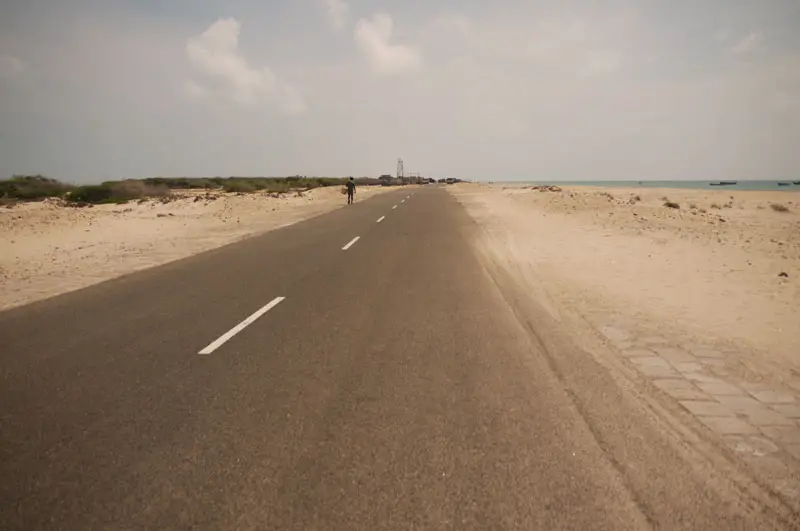
Road to Nowhere. This road leads to the edge of the southern Indian coast where Sri Lanka is just over thirty kilometers away.
Walking the sands in the direction of Sri Lanka, we felt like characters in a desert island story but we couldn’t figure out quite how to make it all the way to the very end of the peninsula without walking for hours in the blazing sun. Out of nowhere a mini-bus with almost tractor-like tyres came around the corner, driving through the shallow waters just off the sand, we tried waving it down but it wouldn’t stop. Then another came and another, there was a convoy of these vehicles and finally one stopped and we climbed up on the roof to join two other passengers who were already up there. It turned out the convoy of vehicles was full of teachers on a team-building trip and they were all thrilled to hang out with us for the few hours at the tip of the country. When the white-knuckle ride finally came to and end we disembarked amongst ruins left here from a cyclone which had destroyed a church and railway station among other things. Being out here felt like being at the world’s end and was one of our best experiences in India hands down. We stayed with the teacher group watching the local fishermen carrying their catch in on wooden poles and the women sorting through the fish, in the blazing heat as small waves gently lapped against the shore. Bouncing back on the minibus roof, chatting with the Indian teachers we got back to our tuk-tuk in one piece and with the memory of a distant deserted land we boarded the bus for Madurai to see another of Tamil Nadu’s famed temples.

Brian is a travel writer, photographer, blogger, travel addict and adventure-junkie. Being outdoors, getting off the beaten track and outside his comfort zone is what makes him tick. Brian’s the dreamer in the relationship; when he’s not travelling, he’s dreaming about it! Keeping fit, cooking, music and red wine take up the rest of his time.
Sign up for our free travel photography Ebook "Faces of Nepal" and you'll also receive our monthly newsletter.

